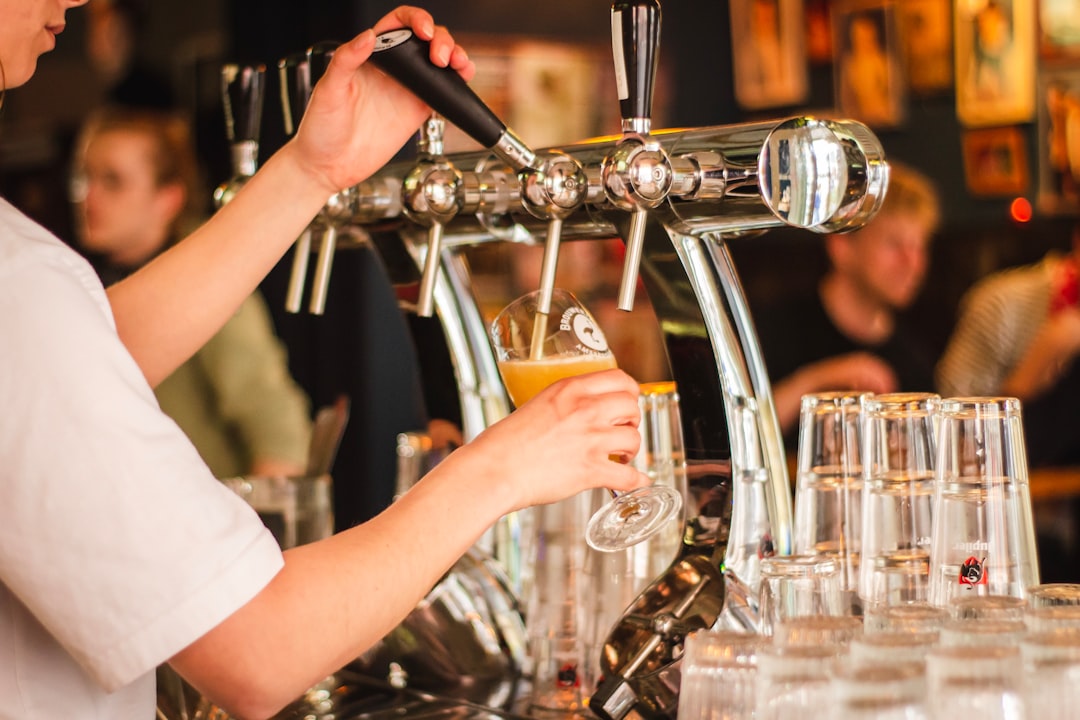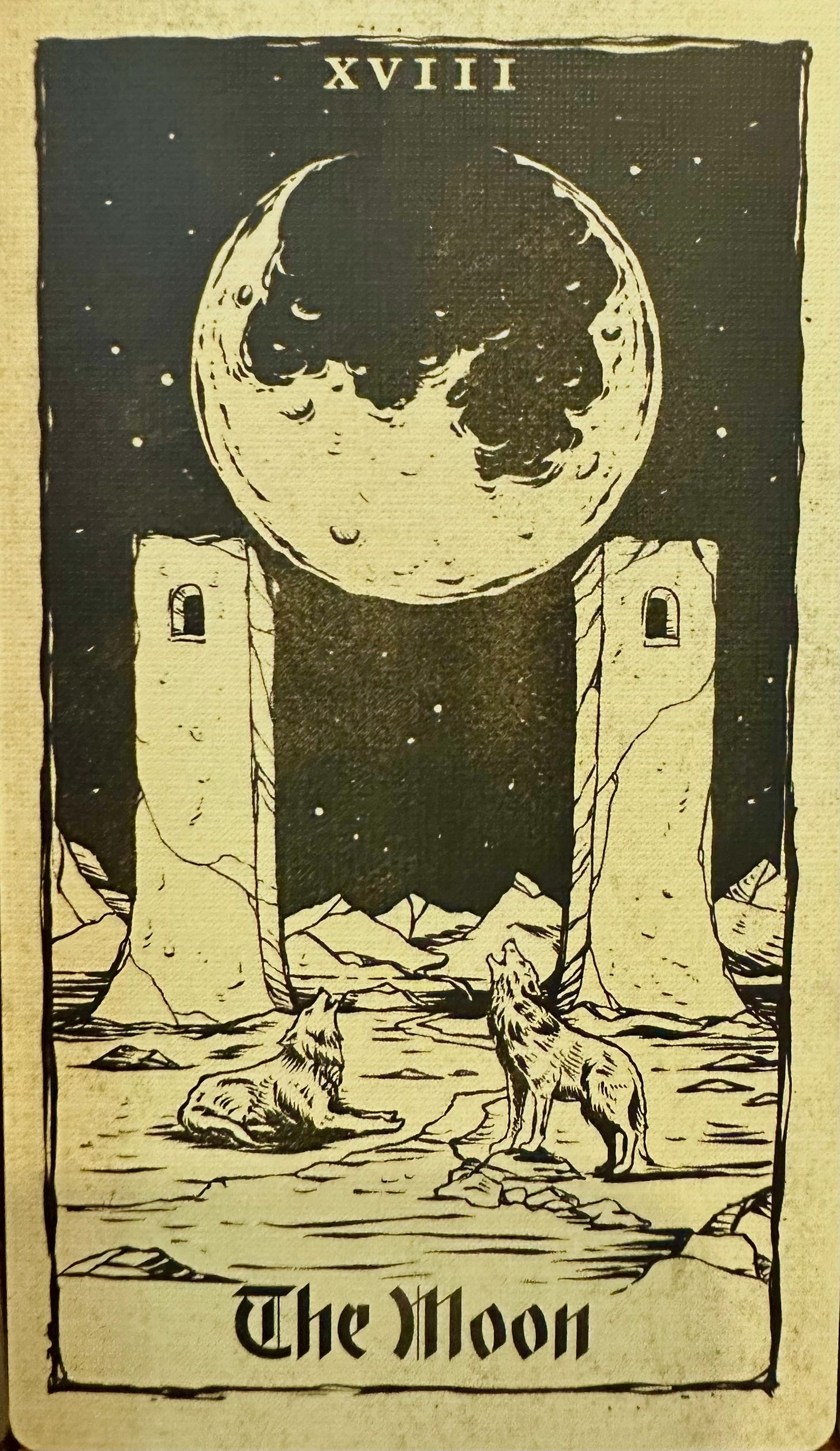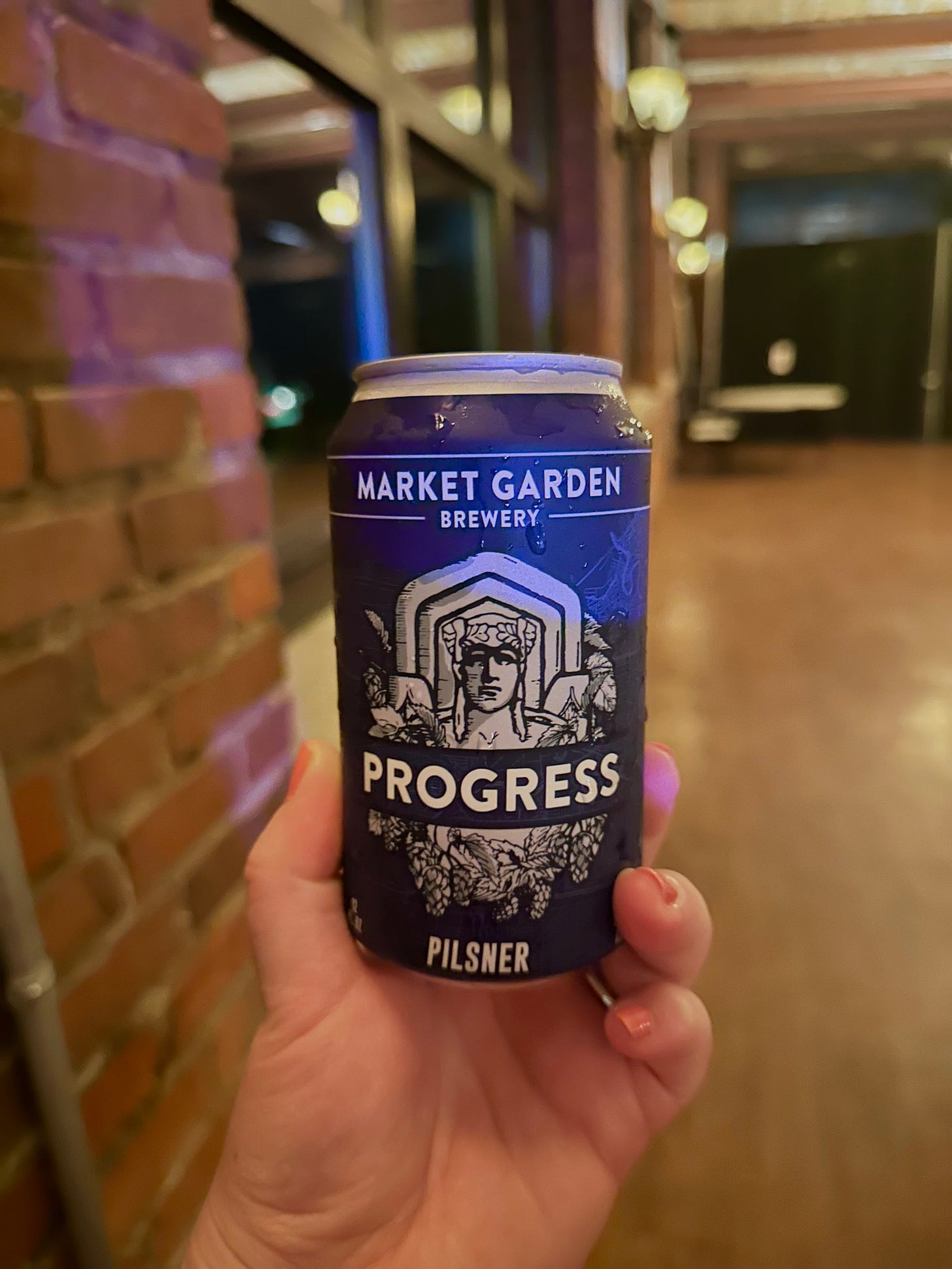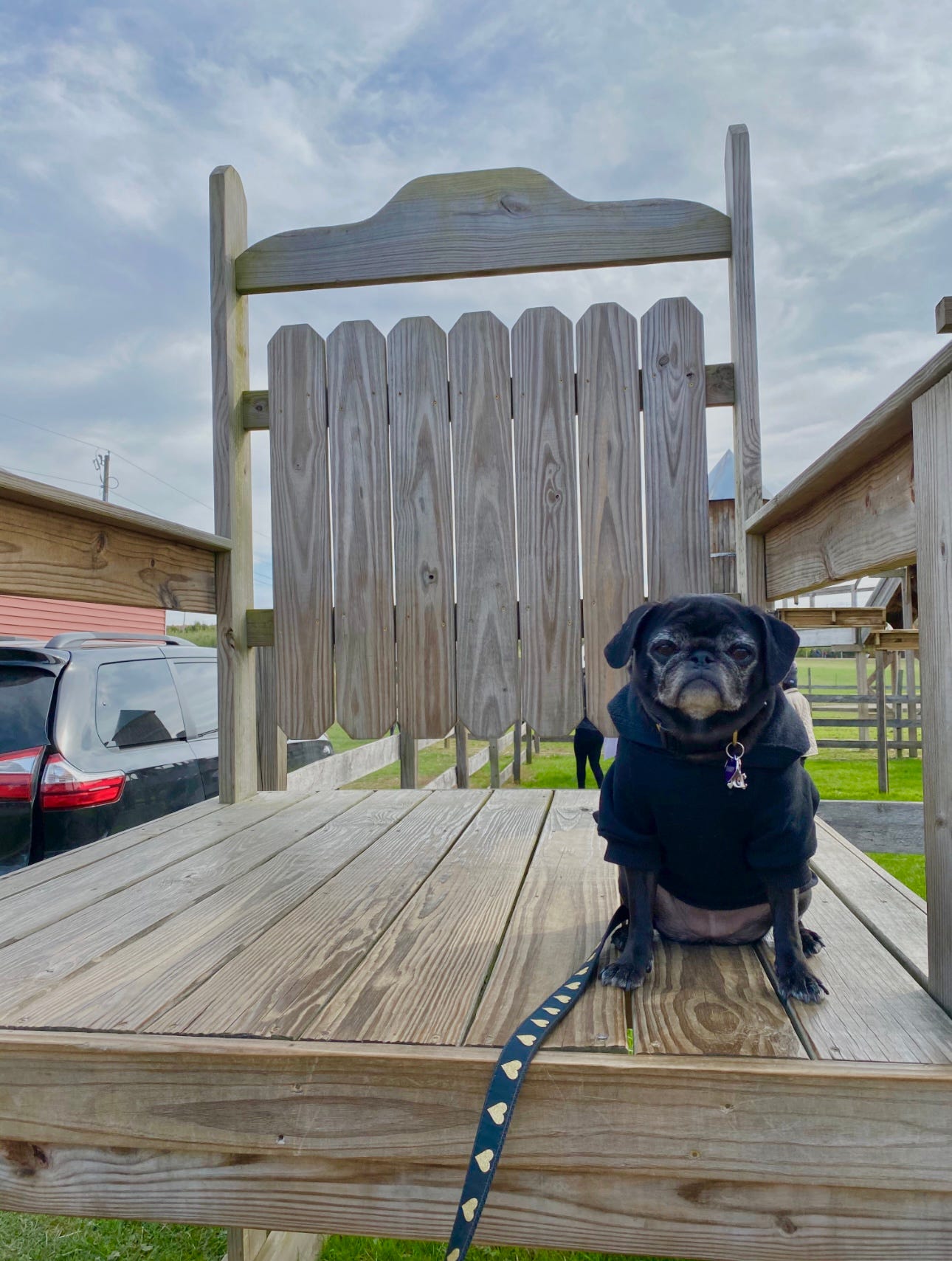104. Conversation Starters: No Menus; Red Flags in Breweries?
Debating whether menu-less ordering would fly in craft beer; thinking about your own personal brewery "icks"; plus tarot for resisting anxiety's pitfalls.
Would Menu-Less Ordering Ever Work in Craft Beer?
Picture this: You walk into a taproom or beer bar, and in place of a tap list, you have a conversation with the bartender about what your mood is, what you’re craving, what you’re into. You’re into botanical aromas more than fruity flavors and you want something light and refreshing. You’re feeling something a little rich and decadent and you’re also a bit of a heat seeker. The bartender mulls it over for a second, then presents you with a Czech-style pilsner or saison or Mexican hot chocolate stout, with just a bit of explanation about the style and the particular beer. Maybe you didn’t even know about this kind of beer, but now you know when you’re having this kind of craving, this might be just the thing.
When I think of the no-menu trend at bars, my mind instantly jumps back to the rise of overly serious faux speakeasies, popping up to push the pendulum back from the perceived too-sweet, too-stupid cocktail wasteland of the ‘90s into a ~mixology as an art form~ era—for better or worse, and I’d argue a little bit of both. I see myself in college, trying desperately to prove myself as a cultured and sophisticated woman of the world in dimly lit New York City cocktail dens, telling suspender-clad bartenders I liked whiskey, without mentioning that my experience drinking it was mostly poured straight from the Jim Beam jug at friends’ garage band practices. They’d disappear for what felt like an eternity and return with something I really probably couldn’t even fully appreciate yet, considering that something along the lines of a “refined palate” was not even on the horizon for me then.
It might have been lost on me at…ahem, 21…but I truly see the value in this kind of bar experience. I think when reserved for just a select few venues who do indeed take their craft quite seriously and have built their service approach around being able to take the time and truly customize something good based on each individual’s preferences, and then explain this in an accessible but never condescending way so the patron actually learns something, this can be a fun tool for education. It can open new doors to drinkers, teach them new things and help them develop their palates, and send them into other bars in their futures where they know new, interesting drinks to order, and where they have what are now more adventurous palates, perhaps. My palate ended up evolving this way through beer and not cocktails, but this is what has made me start thinking about whether this more menu-less, conversation-driven approach would ever work in the craft beer space.
This summer, my friend took me to Sauced, a chic and popular-with-the-young-people wine bar in Williamsburg. It was my first experience ordering in that menu-less fashion I’d only seen at cocktail bars, but with wine. I ordered two different things, a bit differently. One go at the bar, I knew I wanted something sparkling and bone-dry, which are arguably more typical, straightforward wine descriptors. So, perhaps it’s not a huge shock I ended up with something dead-on with what I had a hankering for. But my next go, I was much more loosey-goosey with my order. “I want something red, but good chilled, jammy but not sweet…maybe some spice or funk but not necessarily, like, farm-y.” In case it’s not obvious, I know more about sparkling wine than non-sparkling—I do like red wine but know next to nothing about it, other than what flavors, aromas, and mouthfeel I want. The bartender thought for a beat and delivered to me something absolutely perfect. Days later, I was telling the lovely man who owns my local wine shop about this, and he directed me toward this destined-to-be-chilled, jammy, subtly-funky, dry-finishing Georgian wine that is now my go-to. Which, feels like a win.
That’s why I wonder if this would have a similar trajectory at certain beer venues. Or, might you argue, that it ends up happening even though clear menus are on walls, on bars, and on QR codes? I think in places more intentionally dedicated to craft beer, from the obvious brewery taproom to the bar with a very good, thoughtful beer menu, some version does play out, sure. It can range from the more beginner-level framework of, “I don’t like anything too bitter” to the more seasoned script of, “Now, I’ve never had a dark farmhouse ale, what’s that like?”, but at the end of the day, it’s probably not too far a stretch to say that more craft beer orders come with some kind of conversation than those that come with none at all. But they’re all built on the foundation of menus with specifics, and specifics can feed biases. How many times have you been with a friend who is convinced they hate IPAs because they don’t like anything too bitter, or that they hate stouts because they’re sure they’ll be too heavy and cloying, but then you somehow get them to try an IPA or stout and they love it? The shortcut from perceived beer biases to a more open-minded trial experience, especially one that can result in a positive discovery, could lie in a menu-less discussion.
For every person I could imagine getting into this concept within craft beer, I can see another three who hate it—and I think that opens up a whole different can of worms about craft beer. Compared to what I see in spirits or cocktails and wine, craft beer feels so much more tightly tied to this being able to know, remember, recognize, connect to, and compare brewery names and beer names. Encyclopedic memories, Untappd entries, and personal biases we formulate around it all fuel our ordering decisions. How would you order if you were stripped of all of that? What if you ordered beer from an almost primal place, comparatively, motivated by the exact flavor and mouthfeel experience you want in that very moment rather than, “I’ve been dying to try that brewery,” or “I know I’ll like that brewery more than that other one”?
It’s an interesting experiment, but, again, because of the nature of craft beer in particular, I’m not sure it would ever fly. The menu-less trend is creeping in again at cocktail bars and wine bars, too—on The VinePair Podcast, it’s unpacked whether this concept does in fact even work with wine, or if this really is the domain of cocktail bars alone. If menu-free ordering ever tiptoed into craft beer, I think it would have to be an extension or special feature, not the entire, singular system. Maybe that means signage letting people know the bartenders are open to quick preference chats, or that patrons can skip right to an introductory flight of flagship beers with printed info on each. It’s worth considering because of the evolution of taprooms now, how, in order for breweries to survive long-term, they’ve got to really offer an experience, and welcome more drinkers in, and engage with the kind of meaningful drinking people can’t get at home. Would you ever let your beer order rely on a free-form, jazz kind of conversation?
What are Your Brewery “Red Flags?”
Speaking of VinePair…this recent round-up from Olivia White caught my eye: “5 Brewery Red Flags, According to Reddit.” Said red flags are pouring beer into dirty/used glassware (JFC, I’d hope so), no “classics” on the menu, no non-IPAs on the menu, bartenders ignoring guests, and beers being poured exclusively into (namely, shaker) pints.
This, naturally and as these pieces are wont to do, got me thinking about my own brewery icks. Dirty glassware is the most egregious and obvious of the VinePair list, and one I feel does not even have to be expressly mentioned for most beer enthusiasts. That one, along with bartenders not paying attention to guests, is also not exclusive to breweries.
I’ve always been vocal about wanting and expecting different pour-size options in taprooms. An exclusive use of shaker pints would likely tip most beer fans off that this brewery doesn’t even know foam and aroma basics, but beyond that, some range, like any kind of range that is affordable and practical for the brewery business at hand, is really appreciated and honestly necessary. Is that flights? I don’t know, that definitely doesn’t work for everyone on either the brewery or patron side, but also, for plenty others, it does absolutely work! Maybe it’s half pints or tasters. But, again, some kind of choice is pretty essential.
I don’t think I find what styles are on or off the menu a red flag, per se? I think a brewery should make what it does best, and what the brewers feel most passionate about—there are plenty of marketplace pressures influencing that, too. With thousands upon thousands of breweries, I think it’s an interesting option to find a brewery that really only has, say, sours on the menu, for the most part—especially because if they’re actually surviving doing that, they must know what they’re doing. If you don’t like sours, good news: there are about 9,457 other options for ya.
So, the icks I’d add to this list…well, for now, I won’t add breweries with taprooms that aren’t designed with accessibility and comfort at front and center, because I think this awareness has only recently been spreading—this is more bookmarked in my brain as a future red flag, because at some point, it will indeed be more unacceptable to see (of course, it’s still frustrating to see now!). No code of conduct on a brewery’s website is a given—and speaking of websites, there’s a whole list of things that simply make no sense to be left off a brewery’s online home. No evidence at all of any attempt whatsoever on a brewery’s part to welcome in more diverse drinkers and build up an inclusive, equitable team and leadership is the reddest of big, ol’ waving flags. Sexist and/or discriminatory beer names? Duh.
Indeed, I think red flags will grow as we get further and further past craft beer’s reckoning and come-to-Jesus moments in terms of its culture and people issues—we give businesses time to make changes but at a certain point, it’s clear who’s just not trying. Again, because there are in fact so many breweries that there are options for everyone out there, and good beer to be had next door when you find someone whose beer is not so fantastic, I hope most beer fans are thinking more about culture when they think about deal-breakers re: who they support. But, of course, dirty glassware and rude bartenders will always equal a no-go! What are your brewery icks?
Beer Tarot!
This week, I pulled The Moon.
The Moon speaks to intuition and also to some less-than-stellar-sounding things like fear and anxiety. You might be creating some kind of illusions for yourself, and fueling your own fears and anxieties. This usually involves some bridge you build yourself from your past to your present or future: Some past experience is shaping how you feel about something now or to come. Something upset you or impacted you negatively, and now you’re applying those emotions to a person or event or situation you’re dealing with or are about to deal with. The catch is, this is more likely an unhealthy or even harmful story you’re telling yourself rather than some sort of useful self-preservation. It’s less, “last time I rode a bike I didn’t wear a helmet and I fell and hurt myself, so now I’m always going to wear a helmet,” and more, “last time I dated someone, it didn’t end well, so I’d better never date someone again.” Get it? There are certain negative experiences we want to learn from, and others we need to process our emotions around in order to add them to that former, healthier and more helpful category, instead of letting them turn into anxiety or even paranoia.
DO learn from mistakes and negative experiences. DON’T let mistakes and negative experiences rule your life and close you off from people and places and jobs and joys. The Moon warns us about this, and seeks to guide us toward knowing the difference between practical learning and things like unresolved trauma and harmful anxiety. And that path is all about getting in touch with yourself. Therapy, meditation, reflection, journalling, conversations with loved ones and/or people involved with those past experiences…any and all of these tools can help you process your feelings, learn, grow, and see the difference between helpful and unhelpful thoughts and emotions. Invest this time in yourself—you deserve it, and you need it for a positive way forward.
While you reflect, or afterward for a little reward, enjoy New Glarus’s Moon Man pale ale (if you can get your hands on it). Says the brewery’s website of Moon Man, “Always comfortable in his own skin, he never tries too hard.” See, Moon Man has done his meditation, and now, he knows which stories in his head to listen to.
This Week’s Boozy Media Rec
The most beautiful writing I read all week was, easily, David Nilsen’s “On Curiosity, Empathy, and the Flavor of Beer” for BELT Magazine. This piece centers around one of this newsletter’s favorite topics, which is the need for increased inclusivity in the language around beer. But David paints a whole, life-spanning, world-building picture here, using a beautiful and relatable narrative to examine when beer descriptors can be tools of gate-keeping versus when—and how—they can be portals to learning and connection. This will inspire you to get out there and explore new reference points, have more conversations about it with family and friends, and maybe even write about your own experiences!
Ex-BEER-ience of the Week
We spent this past weekend in Cleveland for our friends’ wedding and while I did get time to visit some really great spots I loved quite a bit—namely Noble Beast and Masthead!—I cannot say that any beer was better than the Market Garden pilsner I enjoyed actually at said wedding. A lovely, crisp pilsner while celebrating one of your dearest friends’ happiest of days? Nothing can taste better.
Until next…time(? I’m about to be traveling a ton so this newsletter might get spotty in September!), here’s Darby waiting to welcome fall.







Not an 'ick' yet still annoying is when I encounter a menu board that has all the beer names listed but nary an indication of what style they are. Having to ask the bartender to tell me all the styles is a waste time for both of us.